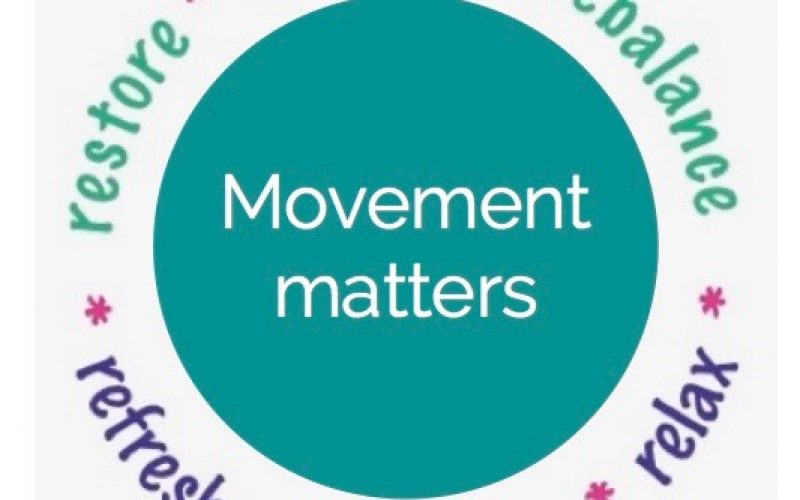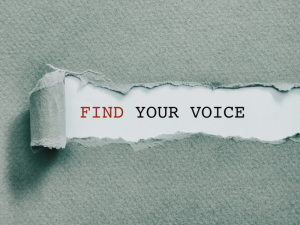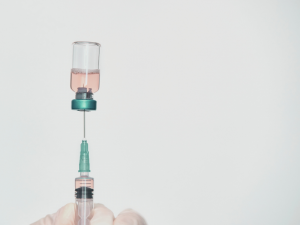Proper alignment can help your body move in a way that’s efficient and intelligent, it can reduce the risk of injury and prevent wear and tear on joints. Standing well has other benefits too, our respiratory and digestive systems are more efficient when the body is aligned, and we can appear more confident. This simple standing body scan is also a fabulous somatic (mindful) tool which can help reduce stress and aid a walking meditation practice.
Movement matters are the blog section dedicated to getting you moving. Exercise hacks (*) are 5 – 10 minutes offerings of simple home movement or ‘exercise’. Taken from my toolbox of somatic movement, osteopathic practice, Pilates exercise repertoire, personal and clients favourites.
* Life hacks refer to shortcut or methods that increase productivity and efficiency, our exercise hacks are designed to do the same, or just make you feel great.
Health and safety:
While you are working without the guidance of a teacher home exercise is your responsibility. Do not attempt these if you are in acute pain, and stop if you feel discomfort, dizzy or experience pain.
Exercise list
- Standing Alignment
- Heel Rises Standing
- Standing on one leg
- Waist Twist Standing
- Pilates Squats
Standing Alignment
Starting position step-by-step instructions
Feet
- Stand with feet hip distance apart (or slightly wider) and in parallel.
- Ensure the weight is even though both feet and the weight is distributed equally between the heels and the forefoot.
- A tripod of support is a useful image, the base of the big toe, the base of the little toe and the heel, notice how this maintains the arches in the feet.
Weight
- Rock slightly forward and back on feet, making the movement smaller and smaller until you feel the weight is balanced in each foot.
Knees
- Relaxed, neither bent nor locked, but fully straight.
Pelvis and spine
- Find a comfortable neutral position in standing to maintain YOUR natural spinal curves and normal alignment at the hips.
- Gently tilting your pelvis backwards and forwards (anteriorly & posteriorly) without bending the knees, will help you find this.
Torso, thorax and ribcage
- Feel equal length through both sides of the waistline.
- Allow the ribcage to relax and sit directly above the pelvis, neither swaying backwards nor slumping forwards.
- Allow the scapulae (shoulder blades) to feel wide, released and connected to the mid-back. Open the collarbones and the fronts of the shoulders keeping the sternum (breastbone) soft.
Head and neck
- Allow the head to balance freely on top of the spine, sending the crown of the head upwards.
- Lengthen the back of the neck and direct the eye focus forward.
- Relax the jaw, and the facial muscles with chin resting naturally, imagine a mirror directly ahead with your full face reflected is often helpful.
Arms
- Allow the arms to hang freely in the shoulder sockets. Feel space underneath the armpits and a sense of weight through the hands.
Final checks
- Send the feet down towards the floor while keeping the head reaching up, we call this opposition
- Imagine that the tops of the ears reaching for the sky.
- This position should not feel forced or held.
- Breathe, take full wide relaxed breaths
Standing Heel Rises
Encourages alignment of the ankles, knees and hips. Mobilises and strengthens the ankles. Challenges balance and torso stability.
Starting position as above, but with heels together or place a rolled-up sock between ankles.
- Exhale: Peel (lift) the heels off the floor and rise up onto the balls of the feet, maintain the weigh across the big and little toes of each foot. Maintain a still and stable pelvis and spine, fully straighten the legs avoiding hyperextension the knees.
- Inhale: Slowly lower the heels back down to the floor, keeping along and stable spine.
- Repeat 5 times
Tip: Use support if needed, stand sideways near a wall/or chair with a hand lightly in contact to help maintain balance.
Watchpoints
- Keep the weight evenly balanced through both feet, no forward or backwards movement allowed.
- Ensure that the eye focus is directed outwards and forwards.

Standing on one leg
Teaches disassociation of the thigh at the hip joint.
Challenge balance and upright posture
Starting position, as above, with the arms down by the side of the body
- Exhale:Keep standing tall in the whole torso with head over spine.
- Transfer the weight to one leg keeping the pelvis as level as possible lift the other leg away from the floor by flexing (bending) at the knee and hip.
- Inhale:Hold the position.
- Exhale: Return the leg back to the standing position, keeping torso stable
- Repeat 5 times alternating sides.
Tip: Use support if needed, stand sideways near a wall/or chair with a hand lightly in contact to help maintain balance.
Watchpoints
- Keep a stable pelvis and spine throughout.
- Ensure the weight is evenly transferred through the sole of the feet.
- Arms hang freely from relaxed shoulders.
- Relax the neck and allow the head to balance freely on

Standing Spine Twist
Rotation helps to mobilise, stretch and strengthen the spine, opens the chest to help connect breathing with movement.
Starting position, as above, with arms folded in front of the chest, just below shoulder height. One palm is on top of the opposite elbow, the other hand is positioned underneath the opposite elbow.
- Inhale: Sequentially from the from your waist rotate the spine to one side, maintain the position and stability of the pelvis.
- Exhale: Allow the spine to lengthen up, initiating from the centre rotate the spine again, returning to the starting position.
- Repeat 5 times each side
Watchpoints
- Maintain the weight evenly balanced on both feet.
- Avoid any movement of the pelvis or legs.
- The rotation of the spine is sequential, initially leading with the head and returning with the centre.

Monkey bends aka Pilates squats
The squat is considered by many as one of the fundamentals of all exercise and a crucial functional movement in daily life, yet it is executed poorly by many people. The ability to squat correctly is key to avoiding many knee, hip and back problems, and one of the movements that give people independence. A well-executed squat is a full body exercise.
Starting position as above
- Exhale: Drive the hips back to bend the knees, allow the ankle to soften, maintain tripod of support the base of the big toe, the little toe and the heel. Aim to get low enough to sit in a sofa.
- Inhale: As the hips flex the torso will naturally tilt forwards slightly.
- Exhale: Straighten the legs and return to the starting position.
- Repeat 5 times
Watchpoints
- Keep the weight evenly balanced through both feet, by maintaining tripod support.

Final thought
The standing alignment takes a couple of minutes, will energise and relax you at the same. It’s easy to do while you wait for the kettle to boil, waiting in a queue or for your train, even while are brushing your teeth.
Picture Ref: Rehab my patient
SaveSave
SaveSave







